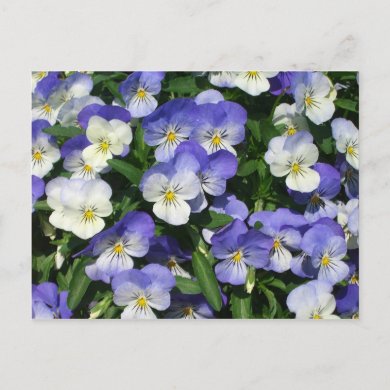November is actually a good time to plant a LOT of things in Texas...something that may be a new thought to you if you came from a colder climate (like the California mountains).
Winter Flower Gardens
November is the transition month from warm season annuals, to cool season annuals. Cool season annuals grow well from November to May, when it starts to get too hot for them. (Warm season annuals grow from April through Early November.) This is the last month to start most cool season annuals from seed (you can start some as early as August), but you can plant transplants through February. Here are some cool season annuals which grow well in Texas:
Alyssum*
Baby's Breath (annual)
Calendula*
Candytuft (annual)
Dahlberg Daisy
Delphinium**
Dianthus
Dusty Miller
English Daisy
Forget Me Not
Larkspur*
Nasturtium*
Nicotiana
Ornamental Cabbage and Kale
Pansy**
Petunia**
Poppies*
Snapdragon
Statice
Stock
Sweet Pea*
Viola
*Best Direct Seeded
**Better to Buy Transplants
Bulbs and Corms
You should also plant most of your spring bulbs this month. Amaryllis bulbs should NOT be planted into the garden now as flowers can be damaged by colder weather. Hybrid tulips and hyacinths will need to go into paper bags, nylon stocking, or net bags and put in the lower drawers of your refrigerator since Texas winters are not cold enough long enough to give them the proper chill they need to flower in the spring.
Trees, Shrubs, Roses
November is the best time to plant or transpnat trees, shrubs and roses. The ground is still warm from summer, encouraging growth, and they will have time to set down roots during the cold season, which here is gentler than the summer heat.
Vines and Groundcovers
November is also a good time to plant perennial vines and groundcovers. Above the ground, you won't see any growth during the winter, but their roots will grow, giving them a stronger start in the spring. The exception is tropical vines like Bougainvillea, which will die off if left un-attended. You can try mulching them heavily (10 inches deep), which gives the roots a chance to survive...or just treat them like an annual and replant next year. (Of course, if they're potted you should bring them inside for the winter).
This month is also a good time to dig, divide and transplant groundcovers.
Vegetables and Herbs
ALL ZONES
Cabbage, celery, kale, kohlrabi, lettuce, spinach, and Swill chard can be planted as transplants this month (if you're in zone 9 you can still direct seed them). You should be able to continue planting cilantro and parsley. I read recently about a gardener in Pennsylvania overwintering these, so they should certainly overwinter in Texas' much milder climate. Find out more about growing cilantro in Texas in winter here. You should harvest any basil you have while you still can, as leaves turn brown when night start aproching 40 degrees.
ZONE 8
In zone 8 you can plant carrots, spinach, cilantro and parsley from seed (though Spinach may be a gamble). In zone 8b you can plant shallot sets, mustard greens, and lettuce seeds.
ZONE 9
You can plant garlic and onion sets and direct seed arugula, beets, bok choy, cabbage, carrots, celery, collard, endive, escarole, kale, kohlrabi, lettuce, peas, radishes, rutabaga, shallot, spinach, and Swiss chard and turnips this time of year. Herbs to plant include sage, dill, fennel, borage and chives as well as the cilantro and parsley.
My info for the above came from the following sources:
Month to Month Gardening in Texas
Houston Herb Society
Central Texas Gardening
Central Texas Horticulture
The Vegetable Gardener
NOTE:
Sorry for completely skipping October's tips this month's tips coming so late. Busy month (and had computer problems).
'From this gardener who is still learning herself

That's great! We can't plant here again for several months to come. :(
ReplyDeleteGreat post! We love winter blooms. Our Community Garden Manager chose pansies, violas and snapdragons to fill her garden with color this winter. They are such beautiful annuals to grow in the winter and add a nice POP of color during the colder, more dreary months.
ReplyDelete